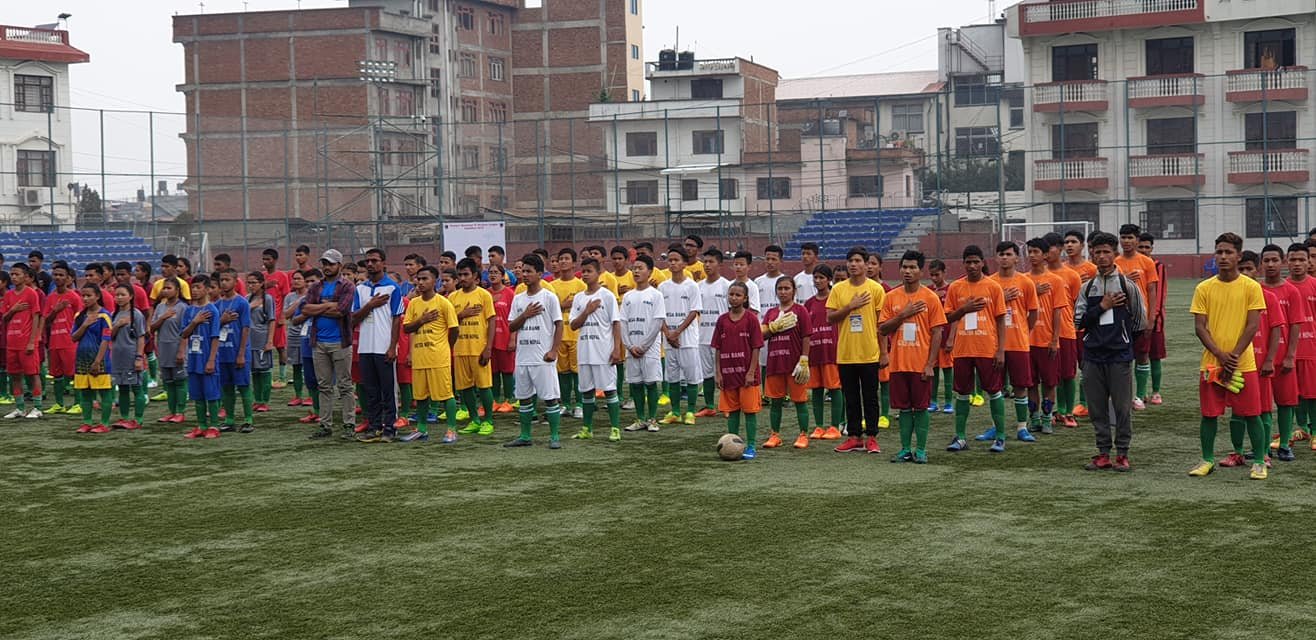
Nepal
Shelter Ashraya Nepal
Shelter Ashraya Nepal is a voluntary, non-government, non-profit organisation established in 2014, which envisions a society where children and youth are safe, protected, and have access to all the basic rights. Shelter uses sports to support children and youth, and offer rehabilitation, reintegration and empowerment. The children and youth wish to show the world that sports is not just a game but also a voice, a picture that reflects independence, equality, and the strength to change the stereotype and patriarchal society.
The United Nations sees sport as an important and powerful tool with the potential to progress towards the 17 Sustainable Development Goals, Shelter Ashraya Nepal supports the SDGs and uses sport to bring the children together in a safe space so that they can be seen and their voices can be heard.Through sports, it aims to provide a platform for children and youth at risk to be heard, to challenge negative stereotypes and to promote their rights. Shelter Nepal uses the power of sport to protect, respect, and support children and youth at risk around Nepal.
Shelter Ashraya Nepal also runs a Prison Football, Rehabilitation Through Football programme in collaboration with the Asian Football Confederation (AFC) and the All Nepal Football Association (ANFA).
Programmes include:
Empowerment through sports
Driving Social Change- End Menstrual Taboo, End Monthly Exile
Red Card to Child Labor
Right to legal Identity
Compulsory School: Right to Education
Protection from Violence
Nutrition: The First Five Years
Country statistics
146 out of 189 in Human Development Index rankings (UNDP, 2022)
Average annual salary per person $1,430 (World Bank, 2023)
Nepal was ranked the 10th country most affected by climate risk from 2000 to 2019 (World Food Programme)
Nepal is a landlocked mountainous country in Southern Asia located between India and China with a population of 29.6 million people.
3.9 million people, more than 10% of the total population, were displaced in Nepal between 2008 and 2023 due to natural disasters (Internal Displacement, 2023).
In 2015, a 7.6 earthquake struck the country in the Gorkha region, 76km northwest of capital Kathmandu. The disaster killed more than 9,000 people and damaged or destroyed over 850,000 homes. According to Oxfam, this disproportionately affected women, children, elderly people, people living with disabilities and those from lower ‘castes*’ (Oxfam).
The earthquake also decimated the economy, wiping out 25% of GDP. Nepal was ranked the 10th country most affected by climate risk from 2000 to 2019 (World Food Programme).
As of 2020, 40.3% of people living in urban areas in Nepal were living in slum areas. However, the government’s primary focus is on rural poverty and overlooks the growing issue of urban poverty, which will reduce the country’s ability to reach its target of reaching ‘middle-income status’ by 2030 and meeting the Sustainable Development Goals (Kathmandu News, 2024).
Slum areas have grown significantly due to the internal migration of people moving to urban centres in search of greater work opportunities. Many of the people who are living in slums also do not have any official paperwork and are therefore classed as ‘stateless’ (World Bank, 2020; Nepal News, 2022.)
*The caste system is a historic class system found in South Asia. Roughly 260 million people in South Asia are “Dalits,” or members of lower castes, and are therefore treated as ‘untouchable’ by other casts that are deemed to be socially superior.
The Untouchability and Discrimination Act (1963) and the Constitution of Nepal both provide legal protections for Dalits. Yet, discrimination against marginalised communities in Nepal—particularly Dalit people—remains prevalent (Borgen Project, 2020).
STORIES from the region










